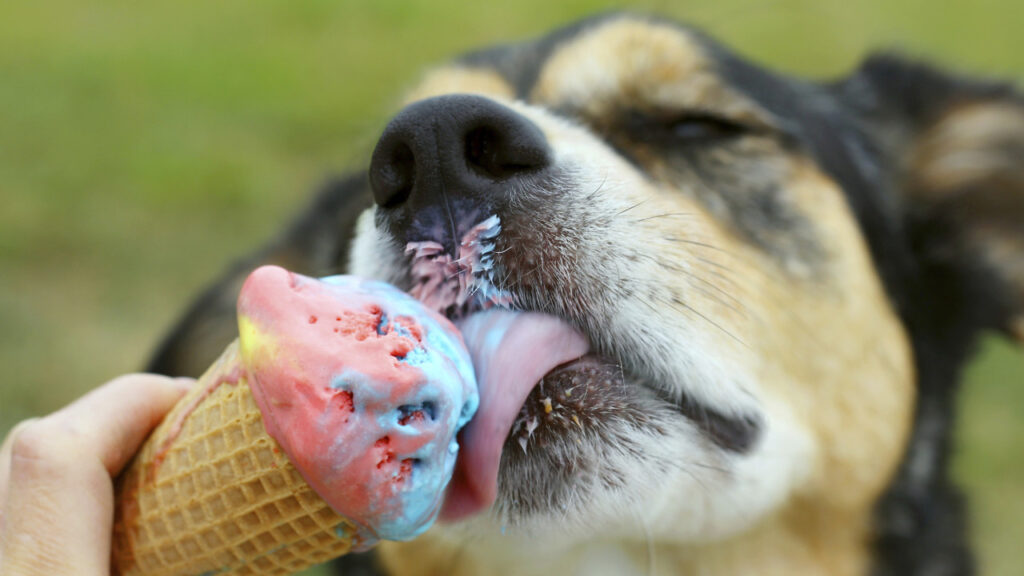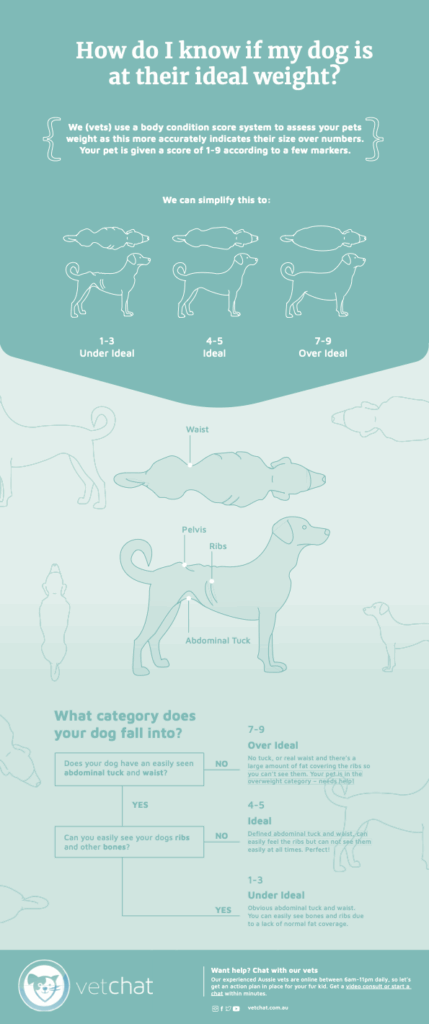Is my dog too chubby?

The concept of ‘healthy weight’ can be confusing for humans and animals alike. Mostly, because we are all individuals with slightly (or hugely) differing nutritional requirements when it comes to being healthy, or having a healthy weight. Going off numbers to evaluate health has really no benefit to anyone.
The only way to determine a healthy weight is to look, and feel. Veterinarians use a system called the Body Condition Score (BCS) to grade their patients size which on a scale of 1-9 goes from underweight to overweight. The ideal healthy weight score is around 4-5.
Basically, you should be able to feel your pet’s ribs, but there should be a small layer of fat covering the top of them (without the fat layer they are too bony!). You should also be able to see a distinct waist which pinches in behind the ribs and finally when you look at your mate side on, there is also ideally a ‘tummy tuck’- this just means the tummy goes upwards towards the pelvis.
So have a go at home and see if you can answer the question yourself. If you think your pet is overweight, a simple solution is a small reduction in the amount you feed them (ie 10%). But if this isn’t effective, you really need to speak to consult one of our veterinarians to get a plan in place so your mate can get to a healthy weight.
So why does it matter anyway? We know that being overweight causes more pain in arthritic pets. Did you know weight loss alone in overweight arthritic dogs is one of the most effective measures to reduce pain?. This is associated with heart disease, diabetes (also making it harder to treat), liver disease and more. Not to mention overweight dogs can’t move as well, You can’t groom as well and fat pockets and rubbing of skin leads to increased risk of skin infections.
Yeah, your dog might be very happy being overweight, but… imagine how happy (and potentially longer-living!) they could be at a healthy weight? And isn’t that what we all want? Healthier and happier pets.
Check out our ideal Body Condition Score below –
